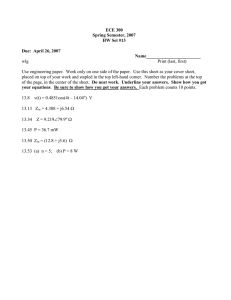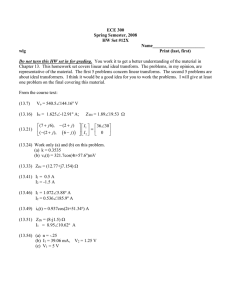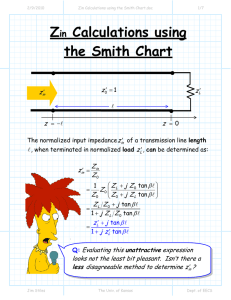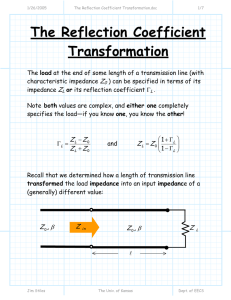Delivered Power
advertisement
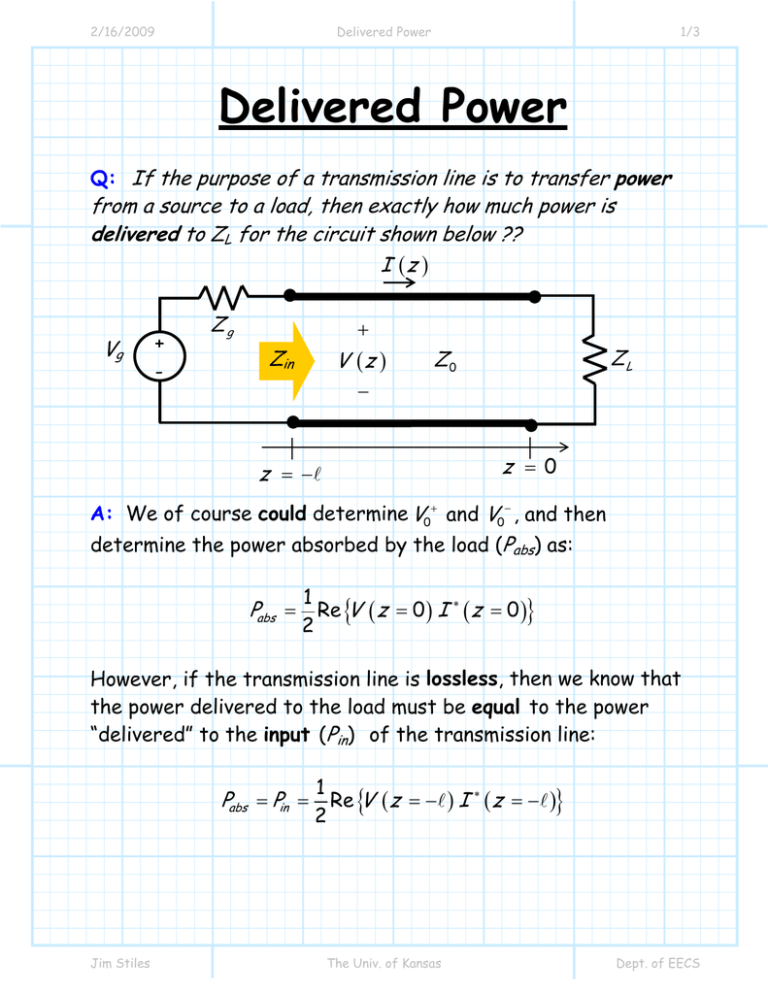
2/16/2009
Delivered Power
1/3
Delivered Power
Q: If the purpose of a transmission line is to transfer power
from a source to a load, then exactly how much power is
delivered to ZL for the circuit shown below ??
I (z )
Vg
+
-
Zg
+
Zin
V (z )
ZL
Z0
−
z = 0
z = −A
A: We of course could determine V0+ and V0− , and then
determine the power absorbed by the load (Pabs) as:
Pabs =
1
Re {V ( z = 0 ) I ∗ ( z = 0 )}
2
However, if the transmission line is lossless, then we know that
the power delivered to the load must be equal to the power
“delivered” to the input (Pin) of the transmission line:
Pabs = Pin =
Jim Stiles
1
Re {V ( z = −A ) I ∗ ( z = −A )}
2
The Univ. of Kansas
Dept. of EECS
2/16/2009
Delivered Power
2/3
However, we can determine this power without having to solve
for V0+ and V0− (i.e., V ( z ) and I ( z ) ). We can simply use our
knowledge of circuit theory!
We can transform load ZL to the beginning of the transmission
line, so that we can replace the transmission line with its input
impedance Zin :
I ( z = −A )
Vg
+
-
Zg
+
Zin = Z ( z = −A )
V ( z = −A )
−
Note by voltage division we can determine:
V ( z = − A ) = Vg
Zin
Z g + Zin
And from Ohm’s Law we conclude:
I ( z = −A ) =
Vg
Z g + Zin
And thus, the power Pin delivered to Zin (and thus the power
Pabs delivered to the load ZL) is:
Jim Stiles
The Univ. of Kansas
Dept. of EECS
2/16/2009
Delivered Power
3/3
1
Re {V ( z = −A ) I ∗ ( z = −A )}
2
⎧
⎫
Vg∗
1
Zin
⎪
⎪
= Re ⎨Vg
∗⎬
2
+
Z
Z
g
in
Z g + Zin ⎪⎭
⎪⎩
Pabs = Pin =
(
=
Vg
2
1
2 Z +Z
g
in
1
= Vg
2
)
2
Zin
2
Re {Zin }
2
Z g + Zin
2
Re {Yin }
Note that we could also determine Pabs from our earlier
expression:
Pabs =
V0+
2
2 Z0
(
1 − ΓL
2
)
But we would of course have to first determine V0+ (! ):
V0+ =Vg e − j β A
Jim Stiles
Z0
Z 0 (1 + Γin ) + Z g (1 − Γin )
The Univ. of Kansas
Dept. of EECS
